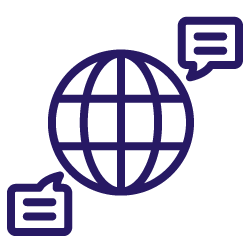We have a new problem in international SEO. A problem nobody really saw coming: AI search engines.
You might be thinking: Come on, everyone’s already talking about that. It’s not new anymore. True, but there is something about it we didn’t anticipate.
A user searches in one language, but the machine can read in any language and then translates the answer back to the user’s language.
That one step changes everything because what if the AI search engine decides to use your Spanish site instead of your English “main” site to answer an English query?
This isn’t just about translations or hreflang anymore. It’s about something deeper: how to build topical authority across all your languages, so your brand stays consistent no matter where the answer comes from.
Why topical authority matters more than ever in the era of LLMs
Let’s take one step back and look at what topical authority actually means.
Topical authority refers to being recognized as an expert on a specific topic because you’ve shown online that you know a lot about a certain subject.
It’s about showing in-depth expertise, not just with one page, but with a connected system of content that covers variations and answers every possible question a user might have.
Your topical authority is earned through your website but also through the content you share, the mentions you earn, and the PR you do for your brand.
Think of it as being a bit like Domain Authority, that number defining how strong your domain is. But instead of measuring your overall website strength, topical authority measures your brand’s level of expertise.
For some time now, search engines have no longer been relying on keywords alone. They try to understand context and search intent in an effort to propose the best possible answer to a query, which means they need to trust you as an authority.
This gets even more important now with LLMs.
AI search engines use techniques like query fan-out where they go beyond answering a user’s main question and they try to answer the next question and understand as many angles of intent as possible. For us SEOs, you’ll recognize this as long-tail queries.
However, topical authority isn’t important just in the context of LLM use, it’s also an important consideration in regards to changing user behavior and how search itself is changing. Our queries are getting more personalized as we tend to tell our LLMs every bit of context we can imagine that might be relevant.
So if you cover a topic in depth — and that’s exactly what you should do when building topical authority — you have a much higher chance to hit the nail on the head and have the answer for that personalized long-tail search a user is making.
Topical authority is no longer just nice to have, it’s necessary for consistent visibility in the AI era.
Why AI makes cross-language authority critical
If a company has a multilingual website, they are most likely to invest more time and effort into their main market language. The other versions are often lighter, less detailed, or updated less frequently.
This makes absolute sense from a business perspective and SEO perspective. For SEO, localization matters more than perfect symmetry. From a business perspective, you naturally put more effort into the language and market that brings you the most revenue.
Historically, that wasn’t really a problem, but with LLMs thrown into the mix, things are getting tricky.
AI search engines don’t respect hreflang or even the language in which a user is searching. They can read any version of your website and translate the answer back into the user’s language within seconds.
I first noticed this when I experimented with a WordPress plugin called GEOHat-LLM (developed by Carlos Sánchez). The plugin lets you add information to your website that Google and the users won’t see but LLMs will. I know that sounds a bit black hat, but it’s perfect for testing assumptions about how ChatGPT reads websites.
For this experiment, I used the tool to tell ChatGPT that I accept Bitcoin payments, something that wasn’t mentioned anywhere on my website. I then ran the same prompts many times in a completely neutral ChatGPT account and analyzed not only the answers, but also from which pages it pulled the information.
Since my main market is the German-speaking DACH region, all my tests were done in German. What surprised me was that ChatGPT very often accessed my English website, read the content there, and translated it back into German for the answer.
My English site only has a few pages and barely ranks in traditional search engines, except for my name. It mainly exists for SEO professionals who discover me through talks or articles like this one.
My German website, on the other hand, includes all my services, pricing, and a detailed blog, and it’s the one that performs in organic search.
This experiment showed me that even if one language version is dominant in search, it doesn’t mean that’s the one AI engines will use.
I’ve since translated my most important pages into English (and Spanish) so they’re available across languages. You can read more about this experiment on my website: “Experiment: SEO for ChatGPT – Can I get mentioned as the No. 1 SEO freelancer in Switzerland who accepts Bitcoin payments?”
We now have a new challenge in international SEO: How do we actually handle different language versions of our site? How do we find outdated or thin content across languages? And how do we build topical authority not just for our main market, but for all of them?
These are questions we really need to explore because any version of your site can suddenly represent your brand globally, whether you planned it or not.
Measuring and building cross-language authority
With this new problem, we first need to find out how our different language versions perform compared to each other and then determine the actions to prioritize. Let’s have a look at a few things we can analyze to identify our weak spots.
Step 1: Find weak spots by comparing languages directly
First of all, we need to segment our different languages and markets so we can compare them side by side. Hopefully, our URL structure is built in a way that makes this easy to segment.
After that, there are several things we can look at to get a feeling for how deep each language goes and where we might have some weak spots.
1. Compare page count
The easiest thing to spot is how many pages we actually have in each language. This is easy to find out with a crawl and a simple Google Sheet / Looker Studio.
Or, if you use tools like Oncrawl, you can create the right language segmentation and see this data automatically in every crawl you run.
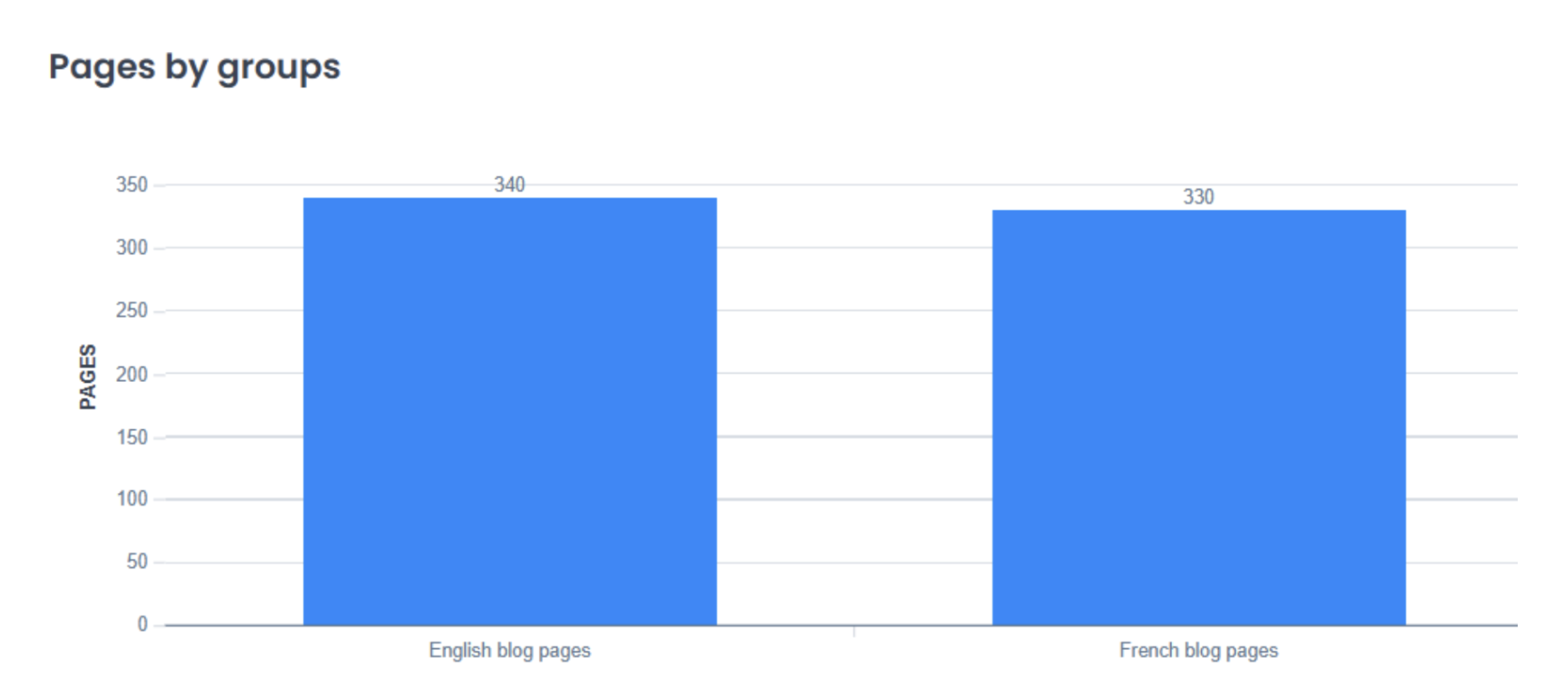
This already gives us an easy way to spot if some language versions are very different in size. Maybe one language version is worked on more intensively, while others only get new pages every now and then.
On the screenshot above from Oncrawl, you can see that this website has almost the same number of pages on the English blog as on the French blog, which is a good sign.
In comparison, if you look at my own website, danileitner.ch, you immediately see that my main language is German, followed by English, and last comes Spanish which I update far less frequently than the other two.
This already indicates that there might be a lack of content and information on my English website, which could be a major weak spot.
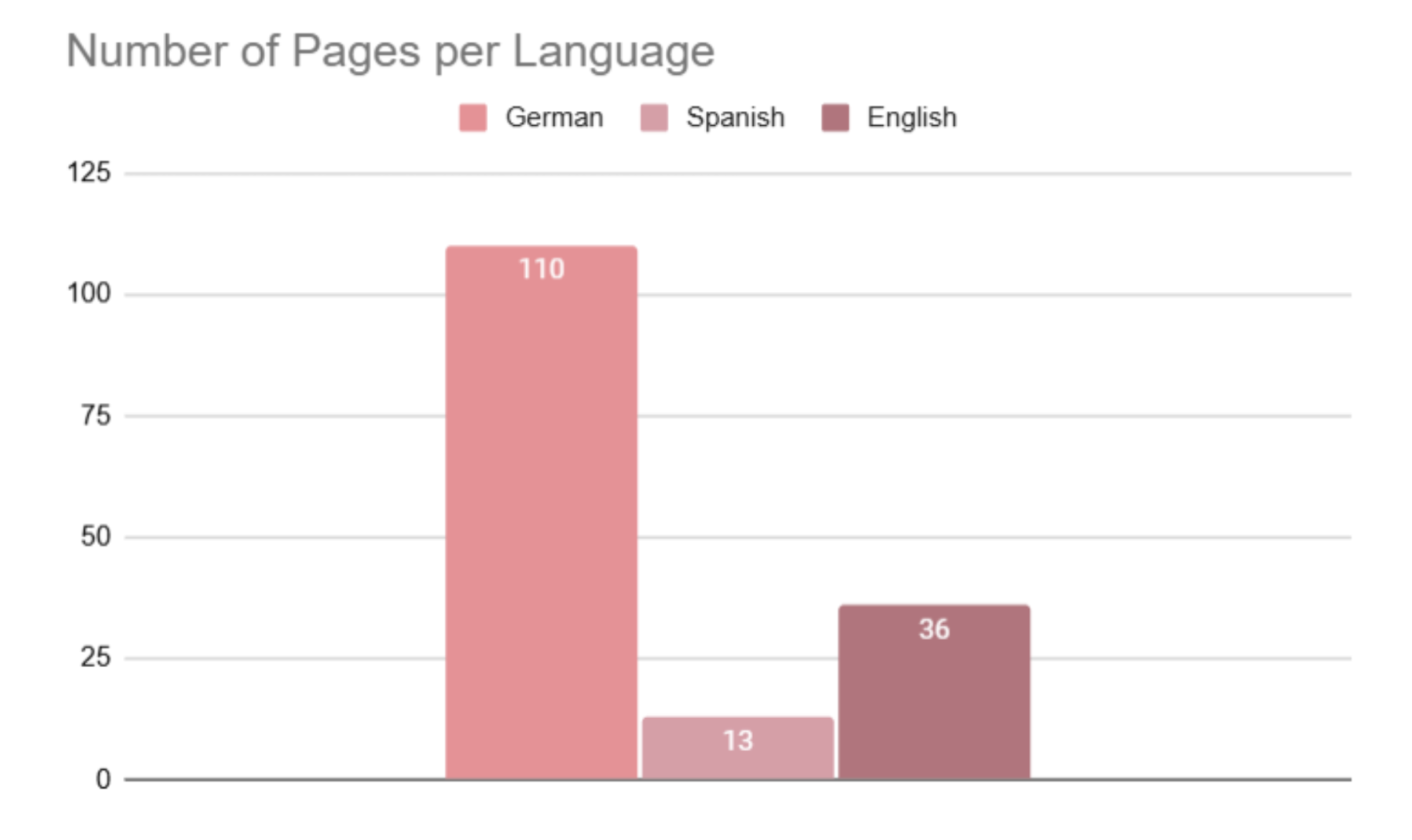
2. Compare SEO performance
Another thing you can easily compare is the traffic and impressions you get from your different language versions. You can check this by using your Google Search Console data and building your own report in Google Sheets or Looker Studio or it can be done directly with Oncrawl.
If you notice a big difference between two markets, there could be several reasons. First, it might simply mean that the markets differ greatly in size: for example, the USA vs. Germany. In that case, a difference in impressions and traffic is completely normal.
The second possibility is that one market is underperforming. This could suggest that you haven’t built enough topical clusters for that language, and you may need to strengthen your content to cover the full range of relevant queries.
This is definitely something worth further investigation.
With Oncrawl, I opted to look at SEO average engagement rate and SEO visits, but for your purposes, you could go much deeper with the tool. You could choose to compare rankings, impressions, clicks, and much more.


From the previous analysis, we know that the English and French blogs are about the same in size. Therefore, in theory, they should cover roughly the same topics and not have any major weaknesses in that regard.
However, the number of visits to the English blog is significantly higher than to the French one. The next step would be to investigate why this is the case: Where is the English traffic coming from? Are there many different sources? And what is the overall potential for the French blog?
Or here’s an example using Looker Studio to look at my own website.
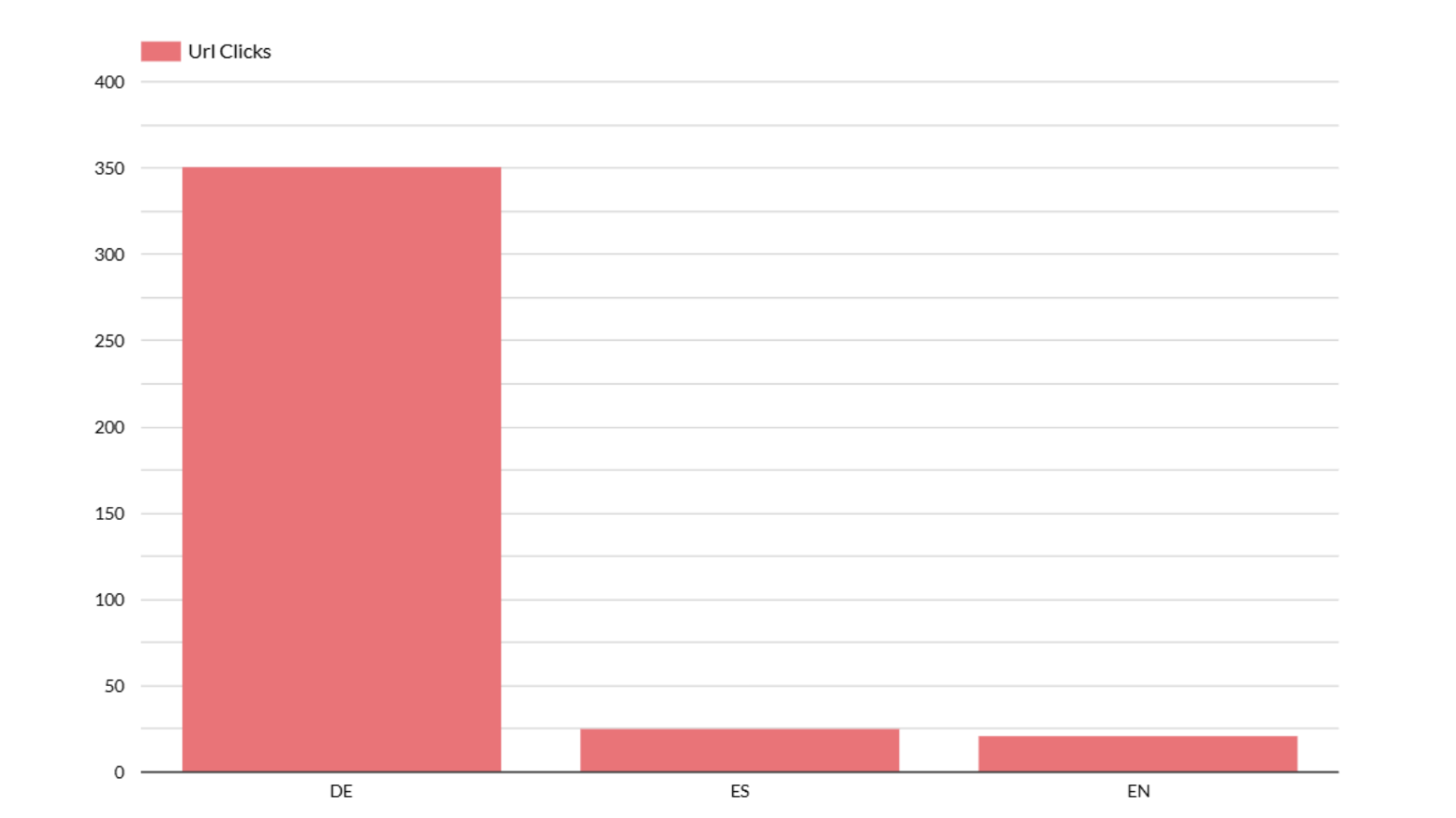
In my case, the difference in URL clicks isn’t because more people speak English than German, it’s simply because my English website is much smaller, as we saw before, so there’s less content that can actually get clicks.
If you want to segment your Google Search Console data in Looker Studio, you need to add a calculated field with a formula.
In my case, I used this code:
CASE WHEN REGEXP_MATCH(LOWER(Landing Page), '^https?://[^/]+/es(/|$)') THEN 'ES' WHEN REGEXP_MATCH(LOWER(Landing Page), '^https?://[^/]+/en(/|$)') THEN 'EN' ELSE 'DE' END
Pro tip: Ask ChatGPT. You can simply share a screenshot of your hreflang tags so it knows the structure of your language folders and then let it create the code for you.
3. Compare content depth and topic coverage
Once we have an initial overview of the website size and performance in each language, we need to dig deeper to understand the differences.
For topical authority, one key factor is content depth. The more we show that we don’t just have a surface-level understanding of a topic but real, in-depth expertise, the easier it becomes for search engines to recognize where our authority lies.
The best way to do this is a content audit. But how easy it will be to map out depends largely on your website structure.
Option 1: Clear URL structure with topic hubs
If your site has a well-organized URL structure that reflects hubs and topics, the analysis is straightforward. You can go hub by hub and run a content audit, comparing the different language versions side by side.
Option 2: Flat URL structure
If your site has a leaner structure — for example, everything lives under /blog/ or even without that — large-scale analysis becomes more challenging. In this case, you could use AI-based clustering to group similar content by topic (see Lazarina Stoy’s approach).
The outcome should be a topical map showing your main content hubs and related pages for each language. This allows you to see whether your content goes deep enough in every market and where potential gaps exist.
4. Compare the behavior of bots
Another thing you can look at is how many pages are indexed for each language compared to those that aren’t. You can also check how often the pages get crawled and which bot goes where.
Some of this information is available directly in Google Search Console (at least for Googlebot). But if you want to go really deep, you’ll need to do a log analysis to find out which pages other crawlers — like ChatGPT’s GPTBot — prefer.
Here are a few examples of what you can find in Oncrawl.

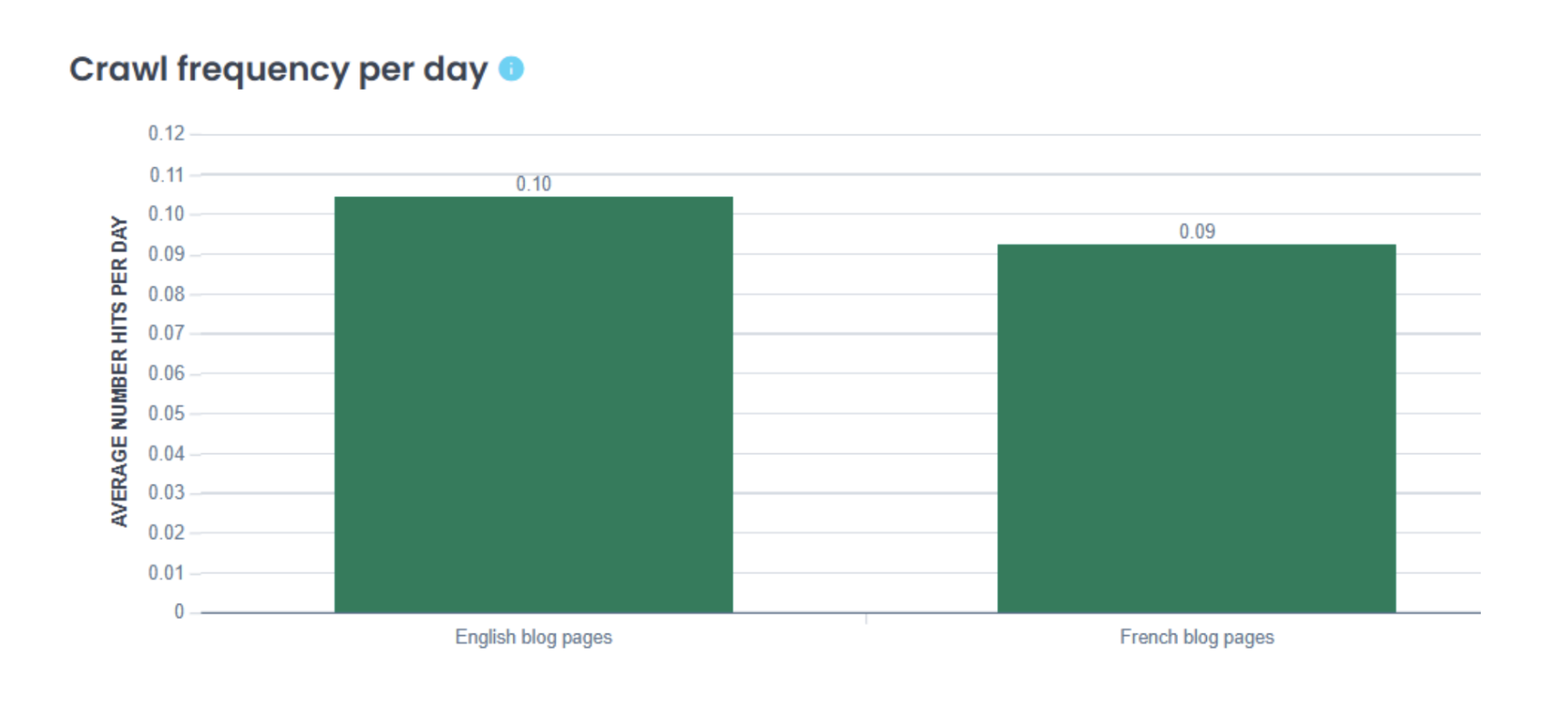

This helps you see whether the different language versions are crawled equally by bots, which might not always be the case.
I have one client who has a major crawling issue with their secondary languages. Their entire link-building effort focuses on the German site, and they’re well known in German-speaking Switzerland. As a result, their French and Italian versions are barely crawled.
By analyzing the different languages, we discovered that there was a problem with the language switcher; it prevented Google from easily accessing the other language versions when starting from the German site.
Issues like this can lead to big differences in impressions and clicks between languages, even if all versions have roughly the same number of pages and content depth.
Step 2: Strengthen your authority for every language
Once you’ve identified the weak spots, it’s time to fix them. But don’t make the mistake of just translating what you already have. Instead, build parallel topical hubs that make sense for each language and market.
Your goal isn’t to make every version identical, but to ensure that each one has enough depth and coverage to demonstrate real expertise on the topics that matter most to your business.
If you manage multiple languages, this might sound like a lot of work. In some cases, it may even be worth considering whether a specific language version should be removed altogether or moved to a separate domain.
Either way, I recommend starting with the languages most likely to be used by LLMs. Based on my own tests, I’d focus first on the English version if that’s not your primary language, as many AI engines seem to prefer English content. To be sure, run a log analysis to see which language version AI bots actually crawl and use in your case.
Finally, review your internal linking and site structure. Often, one language has a clean and logical setup, while another develops gaps or broken links over time because translations were added inconsistently. That kind of inconsistency can weaken your topical authority across the entire site.
Conclusion: AI changed the rules of international SEO
AI changed how we need to think about international SEO because it doesn’t care which version of your website you want to be shown to a user who speaks a certain language. It can pick any version it chooses and consequently any language can be used to represent your brand.
When we expand to new markets, we need to keep that in mind. Are we able to serve this market the same way as the others? Just extending into new markets with a lean “let’s try it a little bit” approach might even have a negative impact on your main market.
It seems as though AI engines tend to favor English websites, so be especially careful if your main market isn’t the English one (like it is in my case with German).
Either way, your international SEO strategy should include a deep look into topical authority across your languages and the weak spots your overall strategy might have.
And always keep an eye on your log files to see which language AI engines prefer. It might just surprise you.
